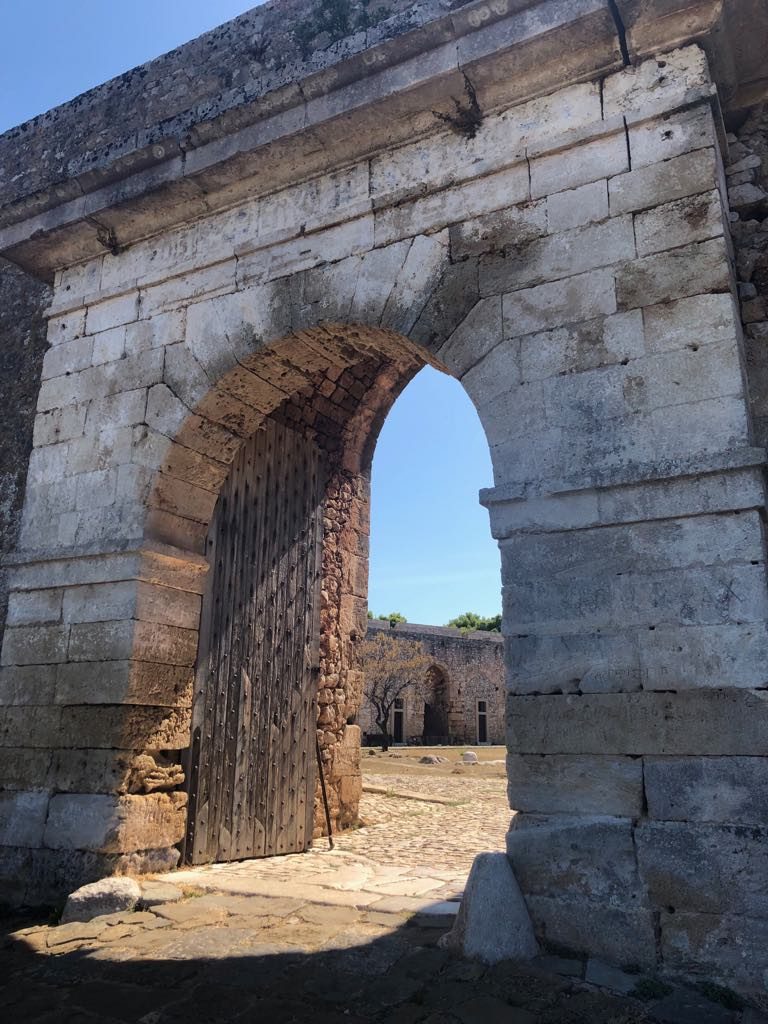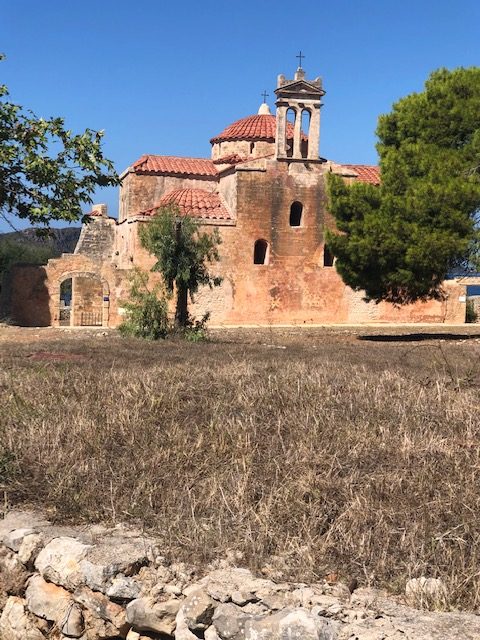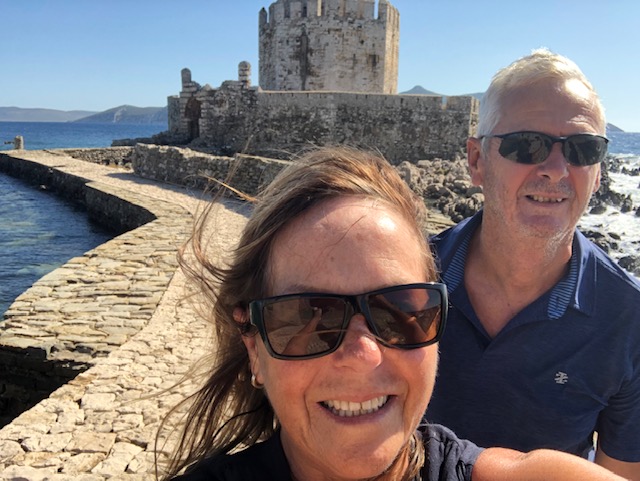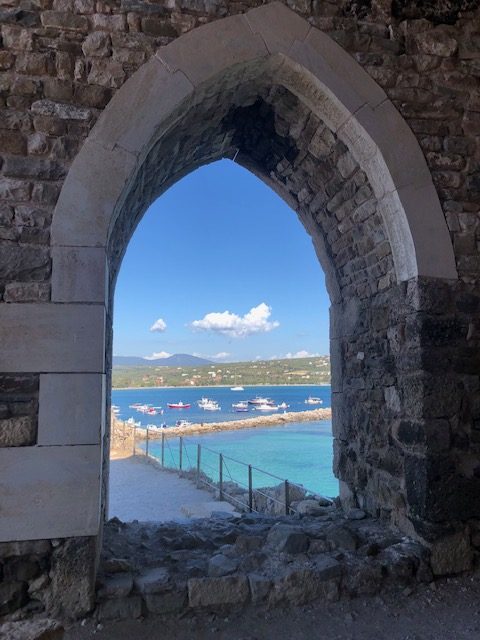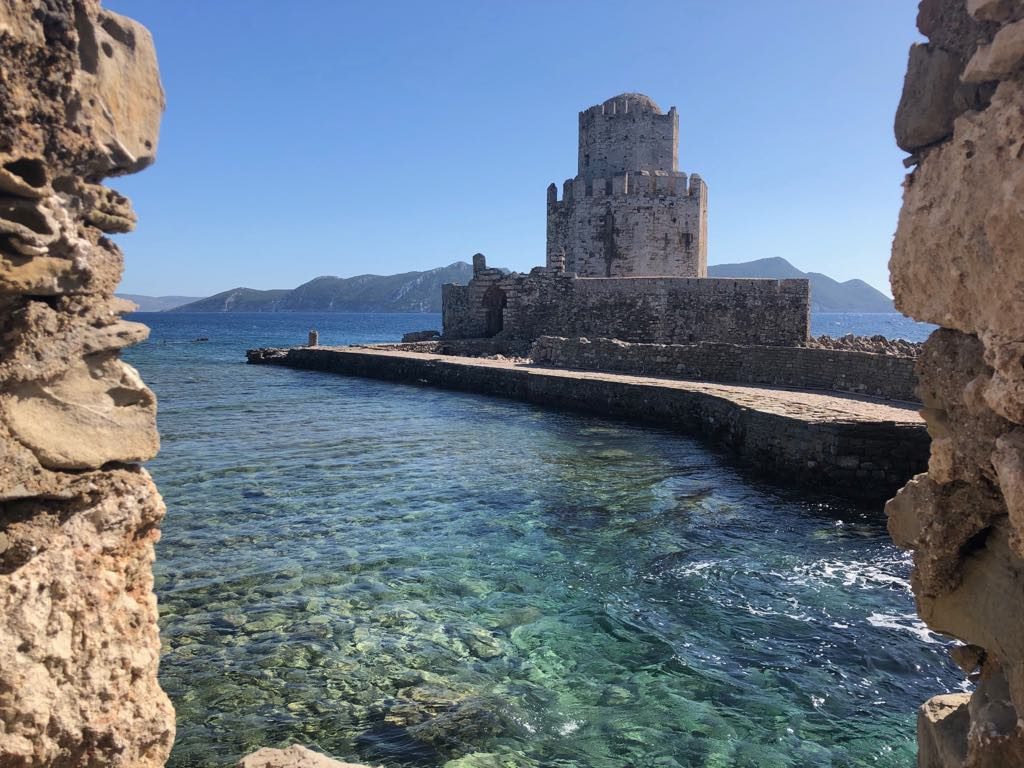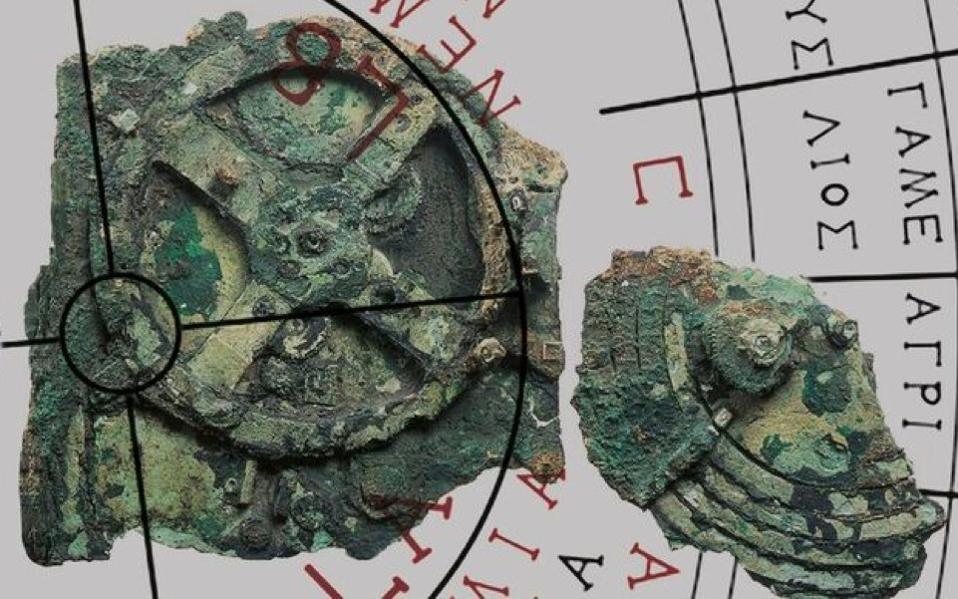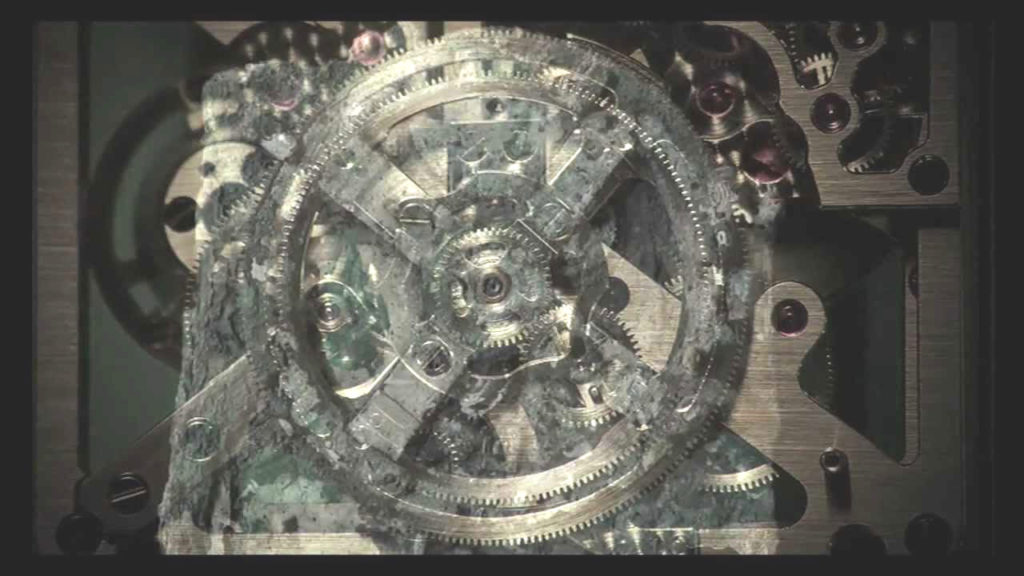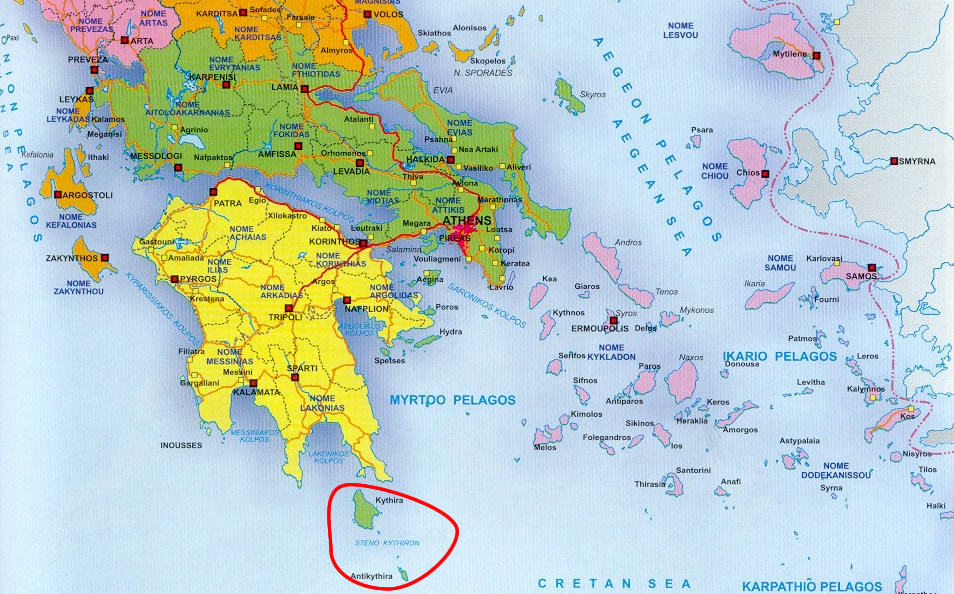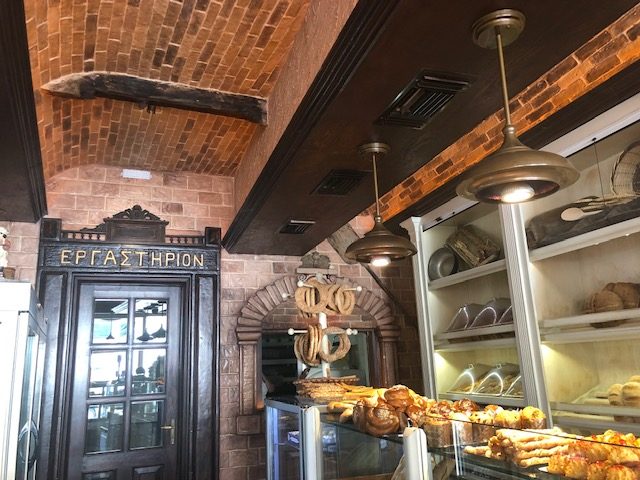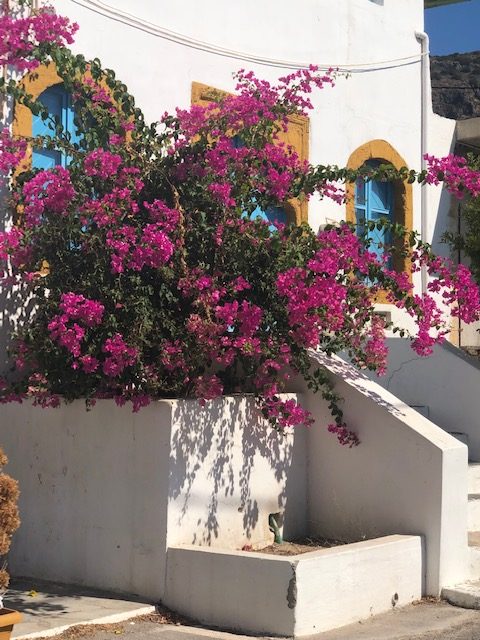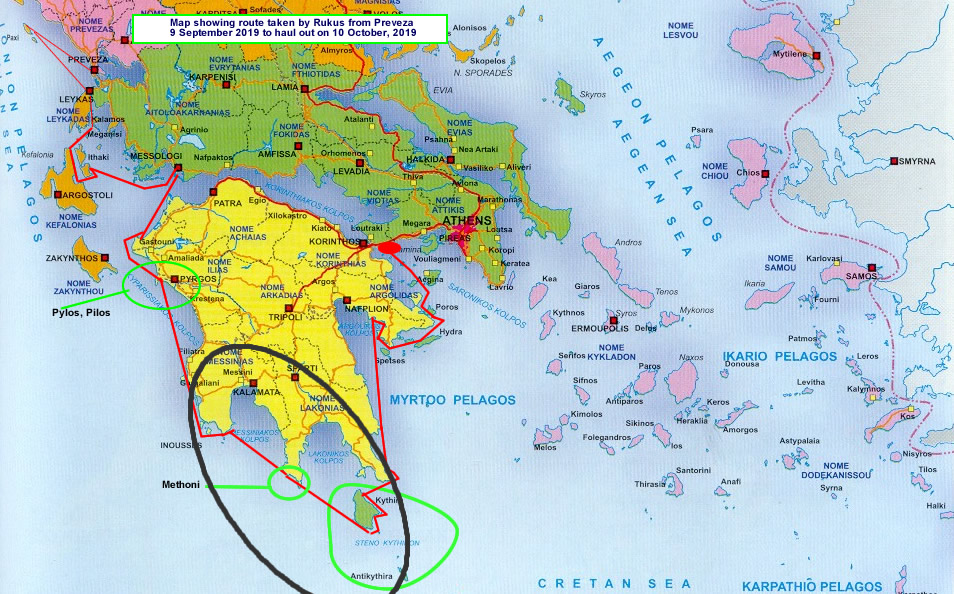
We said a sad goodbye to our wonderful visitors at Mesolongi. As they departed we spend the day washing, planning and preparing for our next part of the journey – travelling down the west side of the Peloponnese, around three serious capes and, hopefully spending time in the south-most island of Kithera.
This whole area is less often visited due to the weather which can be very violent and unpredictable. We had the luck of the Irish with no violent weather – just the opposite; over the next couple of weeks with had too little wind and many hours of motoring between anchorages. Many ancient castles and ruins dot this incredibly rocky coast, a testament to it’s strategic importance and the history of the area.
We are both amazed by the history of this area and John was moved to pen the following:
Interesting facts – OK so maybe you are over the history thing. But this area (Peloponnese) is laced with history, so bear with me as I condense two incidents which shaped history
The first happened around Preveza (where we purchased and launched RUKUS). There was a scrap for the control of the Roman Empire centred here after the assassination of Julius Caesar. There was a sea battle at the mouth of the estuary between Octavian and Anthony (as in Cleopatra fame) for the control of the Roman Empire. Two huge naval fleets were assembled waiting for each other to make a move. Anthony made the move to attack in the morning but had no wind whereas Octavian used the NW wind in the afternoon to annihilate Anthony and the Egyptian fleet. Octavian was the victor and Anthony scuttled back to Egypt with the Egyptian fleet. The result was a great city constructed in that area called Nikopolis the remnants which can be seen today.
The second event happened much later in the 1800s and was the turning point for the success of the Greek War of Independence and freeing themselves from Turkish rule in 1827. The British, French and Russians signed a treaty independent of the Greeks and Turks which in effect protected the commercial interests of the British, French and Russians in the area- tell me something new. The real battle took place in Pylos on the SW side of the Peloponnese. The Turko – Egyptians formed a U -shaped defense system inside the harbour facing the entrance with 1270 ships and 2450 canons – standard defense formation for those days. The attack, under Lord Codrington with the combined British, French and Russian forces, amounted to 65 ships and 1200 cannons. Knowing they were completely outnumbered and out gunned the fleet sailed into the harbour full of bravado with a band playing ( go figure) and dropped anchor!! Really – what were these guys thinking! The Turko-Egyptian forces were totally confused until one of the Egyptian ships finally let rip and it was all over in 4 hours. Result – all Turkish and Egyptian ships were sunk or captured even though they were hugely outnumbered they had superior technology, in the form of canons due which were able to be reloaded and fired in much quicker succession. This win, together with other battles fought and won around the same period all over Greece, released the Greeks from Ottoman (Turkish) rule and Independence followed. France mopped up any remaining opposition in the Peloponnese after which Greece was finally independent.
Did you know that the first analogue computer was discovered by sponge divers in 180 ft of water off Antikithera (the small island at the south end of Kithera) on the Peloponnese. It was discovered among an ancient ship wreck and the mechanism has been dated around 200 BC and this astrobe could predict the movement and positions of the sun over a 19 year cycle, as well as the moon, planetary positions and to accurately date forthcoming eclipses. It is an amazing discovery and this link takes you to a short video if you are interested in learning more : YouTube link . This technology appears to have been lost for the next 1600 years – the mind boggles!
